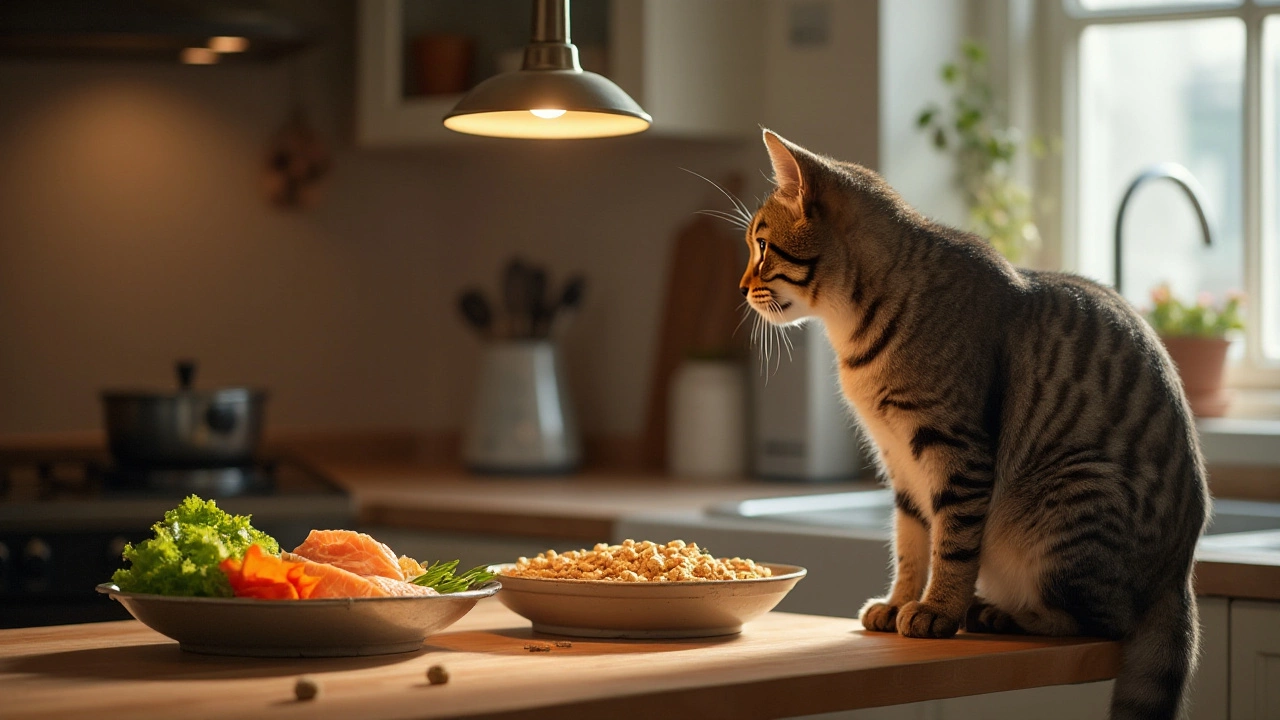Satiety in Cats – Simple Ways to Keep Your Kitty Full
Ever notice your cat meowing at the bowl even after you’ve just fed them? That’s a sign their satiety needs a boost. When a cat feels truly satisfied, they’re calmer, less likely to overeat, and you’ll see fewer midnight snack raids. The good news? You can improve cat satiety with a few easy tweaks to food choice and feeding routines.
Choosing Foods That Keep Cats Satisfied
The first step is picking a diet that tricks the brain into thinking it’s had enough. Look for foods high in protein and moderate in fat – cats are obligate carnivores, so a protein‑rich meal hits their natural cravings. Wet food usually wins because it has more water, which adds volume without extra calories. If you blend wet and dry, you get the crunch they love plus the fullness factor.
Check the ingredient list. Real meat should be the first ingredient, not meat by‑products or filler. Adding fiber sources like pumpkin or beet pulp can slow digestion, making the cat feel full longer. Some brands also include L‑carnitine or taurine, which support metabolism and keep energy steady.
Feeding Strategies to Maximise Fullness
How you serve the food matters as much as what you serve. Split the daily allowance into two or three smaller meals instead of one big bowl. Multiple feedings keep the stomach from emptying too fast, reducing that “I’m still hungry” feeling.
Use puzzle feeders or slow‑feed bowls. These toys make cats work a bit for their kibble, extending eating time and adding mental stimulation. A 15‑minute snack session feels like a meal to a cat, which can curb begging later.
Watch the portion size. Over‑feeding looks generous but can actually backfire – an over‑full stomach can trigger hunger hormones later in the day. Follow the brand’s guidelines, then adjust based on your cat’s weight and activity level. A quick weigh‑in every few weeks helps you stay on track.
Finally, keep water handy. Dehydration can be mistaken for hunger, prompting extra nibbling. A cat water fountain encourages drinking and adds a sense of freshness that some cats love.
By picking high‑protein, fiber‑rich foods, spreading meals throughout the day, and adding a bit of puzzle play, you’ll see a calmer cat who isn’t constantly begging for more. Try one change at a time, track the results, and enjoy a more satisfied feline companion.
Do Cats Recognize When They're Full? Insights on Feline Eating Habits
Cats, with their independent nature, often leave owners wondering about their eating habits and whether they know when to stop. While domesticated cats rely on their instincts to some extent, their satiety signals can be influenced by diet type and feeding practices. Recognizing fullness in cats depends on various factors including their health and the kind of food provided. Understanding the balance needed for a feline's diet can help in preventing overeating or undereating, ensuring a happy and healthy pet.
